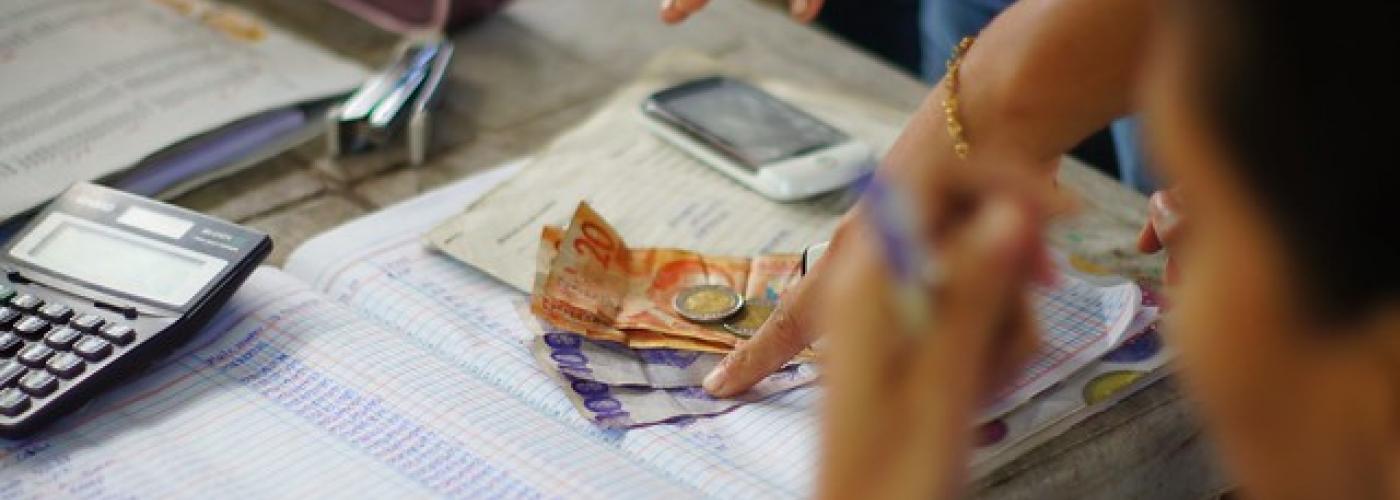Cash Transfer Preparedness and Unlocking the Power of Data
Image

This blog was authored by Hamilton McNutt; Co-founder and Vice President at Strategic Impact Advisors, LLC. Access related resources in the sidebar.
We have all shared our personal information with someone like a mortgage lender, apartment landlord, employer, doctor or perhaps with a smartphone application. Providing your personal information is also something that is experienced by many cash transfer participants during the targeting and registration process. Just as a loan officer must be sure of a potential client’s identity and income levels to determine creditworthiness, organizations implementing cash transfer programs must understand identity and income levels to determine the eligibility of aid recipients. Data protection, of course, is a primary focus of the humanitarian sector. Within these boundaries, some organizations collecting this data are beginning to think about additional responsible ways to use the data to catalyze the delivery of needed services for individuals.
In late 2016, USAID supported a digital cash transfer preparedness grant meant to help NGOs be equally well-prepared to offer (digital) cash as to offer other modalities of assistance (e.g. in-kind items). This initiative stemmed from a partnership between USAID’s Office of U.S. Foreign Disaster Assistance (OFDA), Food for Peace (FFP), and the US Global Development Lab. Digital cash transfer preparedness involves establishing preexisting relationships with vendors, adapting standard operating procedures, and establishing other administrative and operational enablers that will streamline cash delivery via digital payment channels when most appropriate. Digital cash transfer preparedness also aligns with USAID’s Journey to Self-Reliance by helping to advance metrics such as social equity, government capacity and information & communication technology use.
The grants were awarded to Mercy Corps and Catholic Relief Services (CRS). Mercy Corps implemented its digital cash transfer preparedness in the Democratic Republic of Congo and Mali, while CRS chose Somalia. Both organizations used the opportunity to think about how individual data is organized and used for both humanitarian and non-humanitarian outcomes. The learnings are summarized in a report. The report and tools can be accessed online on USAID's website.
The interview process for a person registering with a cash transfer program can involve anywhere from 20 to 80 questions, depending on the circumstance or program goal. These questions typically uncover details around the individual’s identity, household members, levels and means of generating income, household expenditures, access to specific services or food, and a variety of other questions that can: a) confirm identity; and b) confirm the household’s eligibility for receiving aid. While this information has use in a humanitarian setting, could it also be used to inform other initiatives for the households interviewed?
As part of their grant, Mercy Corps explored the idea of an “account uptake plan, which would promote usage of digital payment channels after the end of a program and alleviate some of the challenges faced by service providers who offer their digital payment platforms for cash transfer programs. While cash transfer programs may offer an intriguing use case for digital payment channels, many times these programs are located in rural and hard-to-reach areas. Accessing these remote areas is a costly endeavor for service providers who are often used to serving urban and peri-urban clients. Compounding this, households receiving cash transfers are poor, and may not hold long-term client potential for a service provider. In addition, cash programs have a finite lifespan and thus any service provider investment in infrastructure may go unused once the program ends. In light of these challenges, Mercy Corps assessed whether the information collected on individuals could also be used to segment cash transfer recipients and help service providers identify potential longer term users of their service.
After assessing the data collected, Mercy Corps identified the various factors that contribute to low, medium or critical barriers to uptake. Mercy Corps also segmented people into three categories: non-users, medium-users, and high-users. The table below describes these segmentations:

Mercy Corps can now use the data collected on digital access (i.e. phone ownership, literacy, access to ID, proximity to agents) to identify points of service and basic financial and digital capabilities. Mercy Corps was unable to trial this process, but given the opportunity, they would first anonymize the data to ensure the privacy of personal identifiable information. Then they would segment people, indicating what percentage of individuals fell into the three segments seen above (Non-user, medium user, high user). This segmentation is valuable in that: 1) it will help support any negotiations with service providers and may lead to better service as additional investment is justified; and 2) it can help identify where Mercy Corps can direct additional capacity building around other digital payment services like mobile money, which have been proven to improve livelihoods and increase resilience.
This is just one example of how data can be leveraged beyond its original intent to improve service delivery to recipients of cash transfer programs. Financial service providers around the world are tapping into new data sets in developing markets to deliver credit, savings, and insurance products to previously unserved clients. Cash transfer programs are data-rich, and while data usage must always be carefully considered, the potential to use data responsibly and safely for the long-term betterment of livelihoods is strong.


